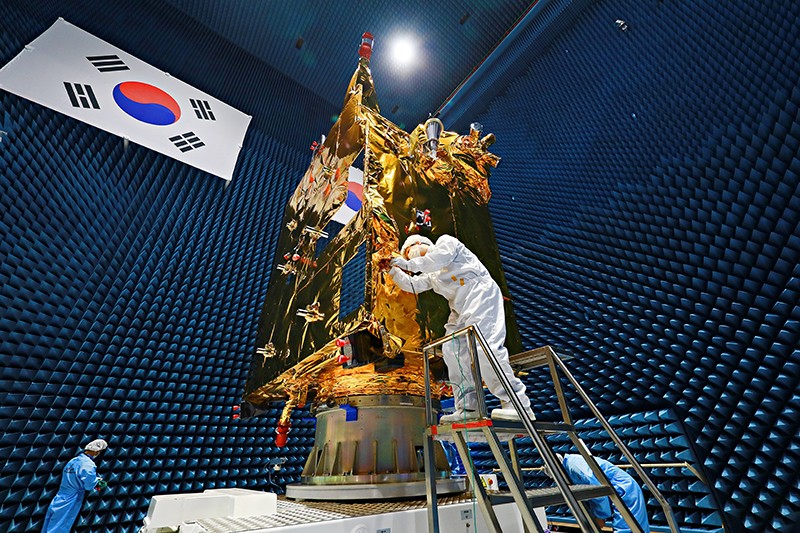A new deal for South Korea’s science?
The global innovation leader confronts new research challenges.
by Catherine Armitage
Credit: Korea Aerospace Research Institute
Of the top 10 countries in the Nature Index, South Korea is holding its footing better than most amid the tsunami of research from China, despite its rank falling from 8th to 9th place in 2016 — a position it retains.
First, some terms: Share, our key metric, measures contributions to articles in the 82 selected natural-sciences journals in the Index, based on the proportional contribution to each article of authors by country (or institution). Adjusted Share accounts for small changes in the number of Index-journal articles over time.
Now to South Korea’s performance: China’s gain of 63.5% in adjusted Share in the Index from 2015 to 2019 translates to declines for other countries. It’s a zero-sum equation: the Index journals publish a finite number of articles. But among the top 10 countries other than China, South Korea, with a mere 6.4% decline in adjusted Share over the past four years, fares better than all but Switzerland (+2.1%) and Australia (−3.8%).
Some of South Korea’s research resilience may be due to the fact that it achieved much greater growth in collaboration with China than it did with any other top 10 country. Its bilateral Collaboration Score with China (the sum of Shares on articles with authors from both countries) has increased by 140% since 2015. In 2018, China displaced Japan as South Korea’s second-most collaborative partner in the Index, after the United States.
South Korean science is poised for further change. Increased competition from China, plus the fallout from the COVID-19 pandemic, pose challenges. Many hope these will be addressed by a new deal for science and technology comparable to President Moon’s Green New Deal re-election manifesto, which promised to reduce South Korea’s net carbon emissions to zero by 2050.
This year, as the first centres of the government’s flagship Institute for Basic Science come up for review, decisions about which centres to keep, close or open will further point to how South Korea plans to forge its own scientific path. It’s a long road between making a pledge and achieving an ambition, but the creativity and determination it has demonstrated by its post-war transformation into a global leader in innovation, as detailed in this supplement, augur well for further success.
Nature 581, S49 (2020)
doi: 10.1038/d41586-020-01463-w
This article is part of Nature Index 2020 South Korea, an editorially independent supplement. Advertisers have no influence over the content.